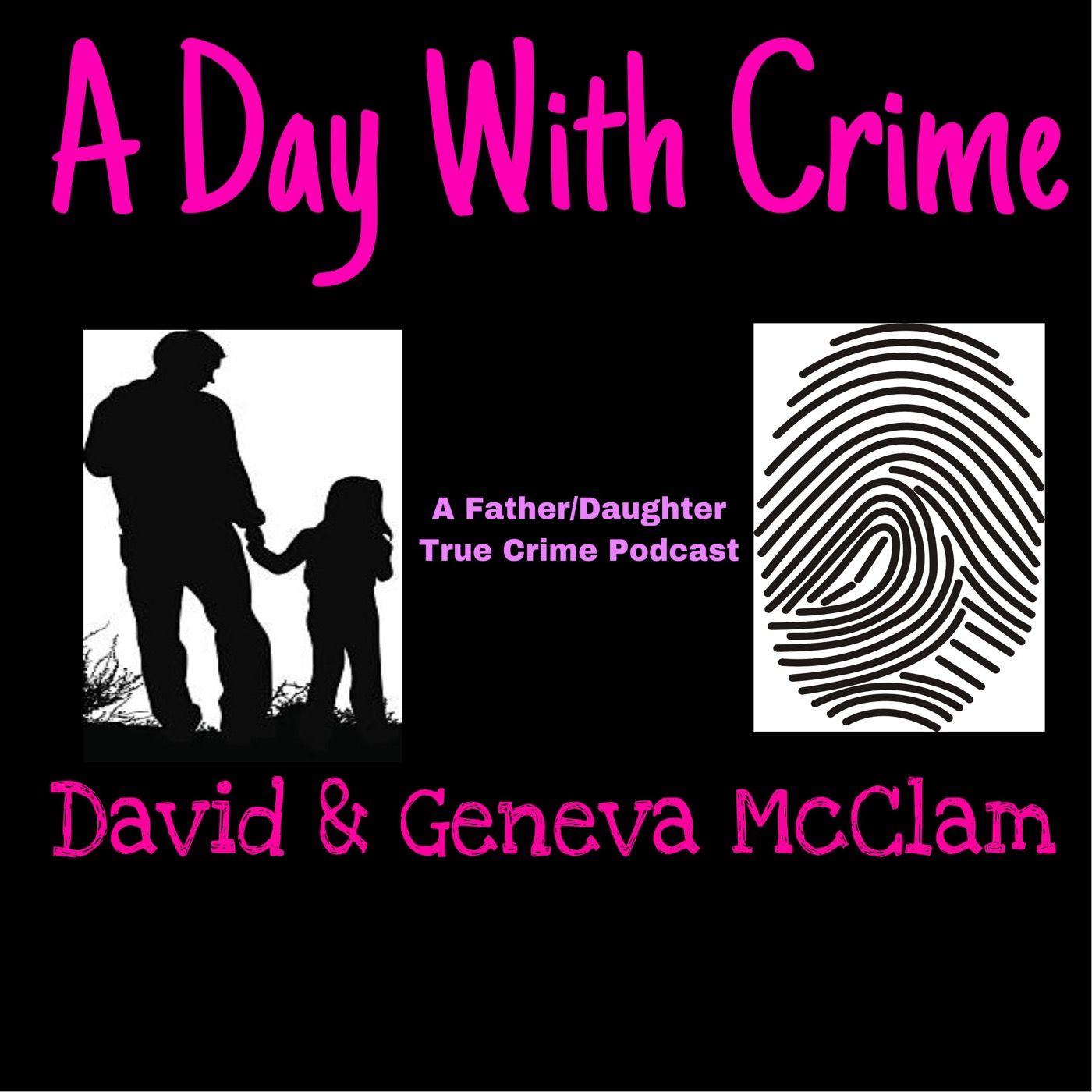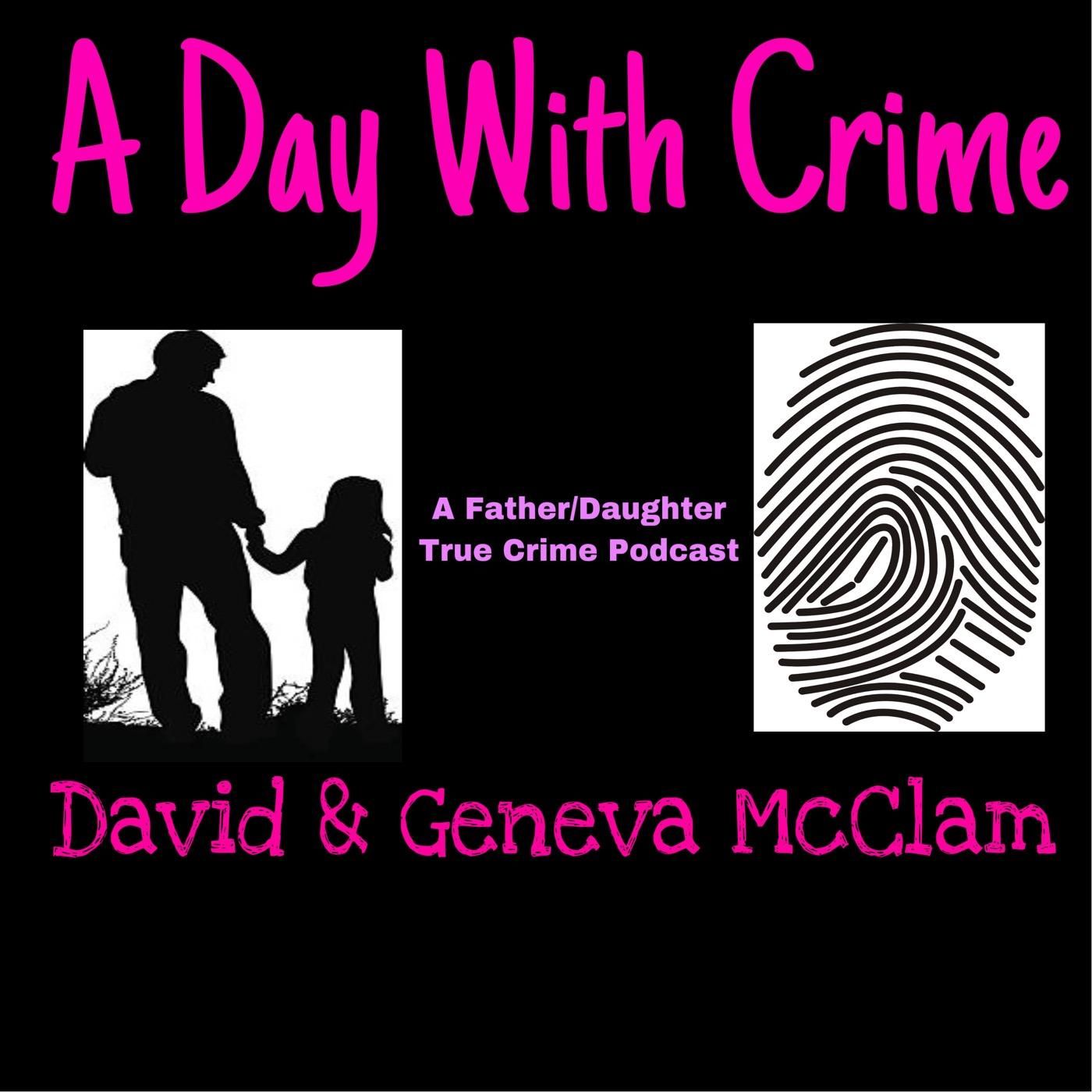Black History Fact #2: The NAACP

On February 12, 2019, the NAACP marked its 110th anniversary. Spurred by growing racial violence in the early 20th century, and particularly by 1908 race riots in Springfield, Illinois, a group of African American leaders joined together to form a new...
On February 12, 2019, the NAACP marked its 110th anniversary. Spurred by growing racial violence in the early 20th century, and particularly by 1908 race riots in Springfield, Illinois, a group of African American leaders joined together to form a new permanent civil rights organization, the National Association for the Advancement of Colored People (NAACP). February 12, 1909, was chosen because it was the centennial anniversary of the birth of Abraham Lincoln.
https://en.wikipedia.org/wiki/NAACP
DON'T FORGET TO RATE, COMMENT AND SUBSCRIBE
Visit our website www.adaywithcrime.com
adaywithcrime@gmail.com
Cover Art created by Geneva McClam
Sound Mixing and editing by David McClam
Intro and outro jingle by David McClam
CHECK OUT OUR OTHER PODCAST
CENA'S CORNER PODCAST WITH DAVID MCCLAM
Spreaker
https://www.spreaker.com/show/cenas-corner-podcast
Apple Music/Itunes
https://podcasts.apple.com/us/podcast/cenas-corner-podcast/id1528395749?uo=4
Google
https://podcasts.google.com/search/cena's%20corner%20podcast
Don’t commit any crimes our there…So you DON’T end up on our podcast!
What's going on everybody and welcome to a, another, episode of A day with crime, black history fact, addition. Of course I am your man, David. .
So let's get into our black history fact for today. Today, we're going to talk about. NAACP
So then NAACP on February 12th, 2019. Marked it's 110th anniversary. Spurred by growing racial violence in the early 20th century. And particularly by [00:01:00] 1908 race riots in Springfield, Illinois. A group of African American leaders joined together to form a new permanent civil rights organization. The national association for the advancement of colored people.
February 12th, 1909 was chosen because it was the Centennial anniversary of the birth of Abraham Lincoln.
All right, so let's jump over lets read some more, about the NAACP, and see what we can learn today.
The National Association For The Advancement Of Colored People, is a civil rights organization in the United States which was formed in 1909, as an interracial endeavor to advance justice for African Americans, by a group including W E B Dubois, Mary White Ovington, morefield story and Ida B Wells.
It's mission in the 21st [00:02:00] century is to ensure the political educational, social, and economic equality of rights. Of all persons and to eliminate race based discrimination.
National NAACP initiatives include political lobbying, publicity efforts and litigation strategies developed by it's legal team.
The group enlarged it's mission in the late 20th century by considering issues such as police misconduct, the status of black foreign refugees, and questions of economic development. It's name retained in accordance with tradition uses the once common term colored people. Referring to those with some African ancestry.
The NAACP bestows annual awards on African-Americans in two categories. Image awards are for achievement in the arts and entertainment.
And spin Garn metals are for outstanding achievement of any kind. it's [00:03:00] headquarters is in Baltimore, Maryland. On June 29th, 2020 Washington, DC radio station, w T O P reported that the NAACP intends to relocate it's national headquarters, from it's long time home in Baltimore, Maryland. To the Franklin D Reeves center
of municipal affairs. A building owned by the District of Columbia.
Located on U and 14th streets in Northwest Washington DC. Derek Johnson, the NAACP president and CEO emphasized, that the organization will be better able to engage in and influence change, in DC then in Baltimore.
All right. So that's a little bit about NAACP. But let's get into a little bit more of the back history of the organization, how it came to be, what it does, and then I'll tell you something that a lot of people just don't know about the NAACP.
. So then NAACP is headquartered at this time in Baltimore. It has additional [00:04:00] regional offices in New York. Michigan. Georgia, Maryland, Texas, Colorado. In California. Each regional office is responsible for coordinating the efforts of state conferences in that region. Local, youth, and college chapters organized activities,
for individual members. In the U S. The NAACP is administered by 64 member board led by a chairperson. The board elects , one person that's the president, and one as the chief executive officer for the organization. Julian bond, civil rights, movement activist, and former Georgia state Senator. Was chairman until replaced in February of 2010.
By healthcare administrator, Roslyn Brock. For decades in the first half of the 20th century. The organization was effectively led by it's executive secretary who acted as chief operating officer. James Weldon Johnson and Walter F. White, who served in that role [00:05:00] successfully from 1920 to 1958 were much more widely known as NAACP leaders.
Then we're presidents doing those years.
Departments within the NAACP govern areas of action. . Local chapters are supported by the branch and field services department. And the youth in college department. The legal department focuses on court cases of broad application to minorities.
Such as systemic discrimination and employment. Government or education. The Washington DC bureau is responsible for lobbying the us government. And the education department works to improve public education. At the local state and federal laws. Uh,
the goal of the health division is to advance health care for minorities. Through public policy initiatives, in education. As of 2007, the NAACP had approximately 425,000 paying and non-paying members. The NAACP is non-current records are housed at the [00:06:00] library of Congress. Which has served as the organization's official repository since 1964.
The records held there comprise approximately 5 million items. Spanning the NAACP history from the time of its founding, until 2003. In 2011, the NAACP team with the digital repository pro quest to digitize and host online. The earlier portion of his archives through 1972. Nearly 2 million pages of documents from the national legal and branch offices.
Throughout the country. It was offer firsthand insight into the organization has work-related to such crucial issues. As lynching. School desegregation and discrimination in all its aspects. In the military, the criminal justice system, employment and housing.
So. There was a movement called the Niagara movement.
That joined with the NAACP.[00:07:00]
So in 1901. The Pan-American exposition. In Buffalo, New York featured many American innovations and achievements, but also included a disparaging caricature of slave life in the south, as well as the depiction of life in Africa called old plantation and darkest Africa respectfully.
A local African-American woman. Mary Talbot of Ohio was appalled by the exhibit as a similar one in Paris, highlighted black achievements. She informed W.E.B. Dubois of the situation and a ' coalition began to form. In 1905, a group of 32 prominent African-American leaders. Met to discuss the challenges facing African Americans and possible strategies and solutions.
They were particularly concerned by the Southern states, disenfranchisement of blacks, starting with Mississippi's passage, of a new constitution in 1890. Through 1908, [00:08:00] southern legislatures dominated by white Southern Democrats. Ratify new constitution and laws, creating barriers to voter registration and more complex election rules.
Uh,him practice. This and the lily-white movement caused the exclusion of most blacks, and many poor whites from the political system in Southern states. Black voter registration and turn out all drop remarkably in the south. As a result of such legislation. Men who have been voting for 30 years in the south,
we're told they did not qualify to register. White dominated legislatures, also pass segregation and Jim Crow laws. Because hotels in the U S was segregated. The men convened in Canada, at the Erie beach hotel. On the Canadian side of the Niagara river and Fort Erie, Ontario. As a result, the group came to be known as the Niagara movement.
[00:09:00] A year later, three none African Americans joined the group, journalist English wailing, a wealthy, socialist and social workers. Mary White Ovington and Henry Moscowitz.
Moscowitz who was Jewish was then also associate leader of the New York society for ethical culture. They met in 1906 at store college. Harpers ferry, West Virginia, and in 1907 in Boston, Massachusetts. The fledgling group struggled for time with limited resources and internal conflict,
and disbanded in 1910. Some of the members of the Niagra movement joined the board of directors of the NAACP. Which was founded in 1909.
Although both organizations shared membership and overlapped for a time. The Niagra movement was a separate organization. Historically it is considered to have had a more radical platform, then the NAACP. [00:10:00] The Niagara movement was formed exclusively by African-Americans. Four European Americans were among the founders of the NAACP.
They included Mary White ovington, Henry Moscowitz, William English Wailing and Oswald Garrison Valard.
Okay. So there's a lot of here. So we kind skipped around. I will leave the link down for you guys. Want to read the rest of this. So let's talk about a couple of things that really did kick this off. so the race riot of 1908 in Springfield, Illinois. The state Capitol and president Abraham Lincoln's hometown.
Was a catalyst showing the urgent need for an effective civil rights organization. In the US in the decades, around the turn of the century. The rate of lynchings of blacks, particularly men, was that an all time high. Mary White Ovington, journalist William English Wiling and Henry Moskowitz is made in New York city.
In January of 1909 to work on organizing for black civil rights.
[00:11:00] They send out solicitations for support to more than 60 prominent Americans instead of meeting day for February 12th, 1909. This was intended to coincide with the 100th anniversary of the birth. president Abraham Lincoln. Who emancipated enslaved African-Americans while the first large meeting did not occur until three months later.
The February date is often cited as the organization's founding date.
So to go with that says that
the NAACP was founded on February 12th, 1909 by a larger group, including African-Americans W.E.B. Dubois, ida B Wells, Archibald Grimké, Mary Church Terrell and the previously named whites here, Henry Moskowitz, Mary White Ovington, William English Wailing the wealthy socialist son of a former slave holding family.
Florence Kelly. social reformer and friend of Dubois. Oswald Garrison Valard and Charles Edward Russell. [00:12:00] Are renowned muckraker and close friend of whaling. Russell helped plan the NAACP and has served as acting chairman of the National Negro Committee, a 4runner, to the NAACP. On May 30th, 1909. And the Niagra movement conference took place at New York City's Henry street settlement house. They created an organization of more than 40 identifying as the National Negro Committee.
And among other founding members, Lillian Wald, a nurse who had founded the Henry street settlement. Where the conference took place.
So that's a little bit on how they got founded. A little bit of the history of the NAACP. Like I said, it goes on forever. So I will leave the link to read all of this because it's very important to know all of this stuff, but it's also very interesting of how the NAACP came together. So the [00:13:00] last part we're going to talk about which a lot of people that I know said, this is one of the biggest reasons. of the NAACP was the Jim Crow and the disenfranchisement.
So in its early years. The NAACP was based in New York city. It concentrated on litigation and efforts to overturn disenfranchisement of blacks, which had been established in every Southern state by 1908. Excluding most from the political system and the Jim Crow statutes that legalize reasonable segregation.
In 1913. The NAACP organized opposition to president Woodrow Wilson's introduction of racial segregation, and to federal government policy, workplaces and hiring. African American women's clubs were among the organizations, that protested Wilson's changes, but the administration did not alter his assaults mint of Southern cabinet members.
And the Southern block in Congress. [00:14:00] By 1914. The group had 6,000 members and 50 branches. It was influential and winning the right of African-Americans to serve as military officers and world war one. 600 African-American officers were commissioned. And several hundred thousand men are registered for the draft.
The following year. The NAACP organized a nationwide protest with marches and numerous cities against DW Griffin, silent movie, the birth of a nation, a film that glamorized the KU Klux Klan. As a result, several cities refuse to allow the film to open.
The NAACP began to lead lawsuits. Targeting disenfranchisement and racial segregation early in it's history. It played a significant part in the challenge of Gwen versus United States in 1915. To Oklahoma's discriminatory grandfather clause, which effectively [00:15:00] disenfranchised, most black citizens, while exempting many whites from certain voter registration requirements. It persuaded the Supreme court of United States to rule and Buchanan versus Warley in 1917.
That state and local governments can not officially segregate African-Americans into separate residential districts. The court's opinion reflected the Jewish prudence. property rights and freedom of contract. As embodied in the earlier proceeding and it established in Lochner versus New York.
It also played a role in desegregating recreational activities via the historic Bob lo excursion company versus Michigan after plaintiff's Sara Elizabeth Ray, was wrongly discriminated against, when attempting to board a ferry. In 1916, chairman Joel Spingarn, invited James Weldon Johnson to serve as fuel secretary.
Uh,Johnson was a former US consult to [00:16:00] Venezuela. And a noted African-American scholar and columnists. Within four years, Johnson was instrumental in increasing the NAACP membership from 9,000. To almost 90,000. In 1920. Johnson was elected head of the organization. Over the next 10 years, the NAACP established it's lobbying in litigation efforts.
Becoming internationally known for his advocacy of equal rights and equal protection for the American Negro. The NAACP devoted much of it's energy during the interwar years. To fight the lynching of blacks throughout the United States by working for legislation, lobbying and educating the public.
The organization sent its field. Secretary Walter F. White. To Phillips county, Arkansas and October 19 19 to investigate the Elaine race riot. . Roving white vigilantes killed more than 200 black tenant farmers and federal troops, after a deputy sheriffs attack [00:17:00] on a union meeting of sharecroppers left one white man dead.
While published his report on the riot and the Chicago daily news. NAACP organized the appeals for 12 black men sentenced to death a month later, based on the fact that testimony, used in their convictions was attained by beatings and electric shock. It gained a groundbreaking Supreme court decision and Moore versus Dempsey.
2 61, US. 86. In 1923, that's significantly expanded the federal courts oversight. Of the stage criminal justice systems in the years to come.
White investigated eight race riots and 41 lynchings for the NAACP, and directed it study 30 years of lynching, in the United States.
All right guys. So I guess it is important to know when it comes to NAACP. That they do fight for. All the things that African-Americans and people of color go through. That's just a [00:18:00] little bit of that, but whenever you see things like the George Floyd murder, they speak up about that. Tamir rice, they came out about that.
They're all about making sure that we're treated equally and fairly, and without this organization. A lot of things. that African-Americans go through today would be a lot, harder to deal with. Without them. We may not have any voting rights right now. I know a lot of who don't like to talk about it, but it has come up.
Since the last President that we had being Donald Trump. And now that they are trying to either take away or seriously reduce African-American voter rights. In several different states, which is mainly all of the states that he lost. from what I was reading. But it is organization is like this.
That help us to make sure that those laws do not get passed unfairly. So on a lot of these cases where you do see an [00:19:00] African-American, maybe people feel like that particular person on trial is there in justly. On African-Americans got arrested in justly,
or things of that nature. NAACP is one of the organizations that usually provides the lawyers for that person, to help them with their legal matters. Because let's face it. A lot of African-American people that do end up in the legal system, does not have the means to supply a lawyer.
So that's a little bit on the NAACP. I hope you guys gained a little bit more knowledge about the organization, how it came to be, what it stands for and what it does. And I'll be the first to say, at least in my opinion. Without them, life for the African-American would probably be just a little bit harder.
All right, guys, we thank you for tuning in to this second. Black history fact, [00:20:00] we hope that you learned something out of this. And of course. I'll be back tomorrow. With yet. Another black history fact. Until then be good to yourself, and to each other. And we're going to catch you guys the next time.





